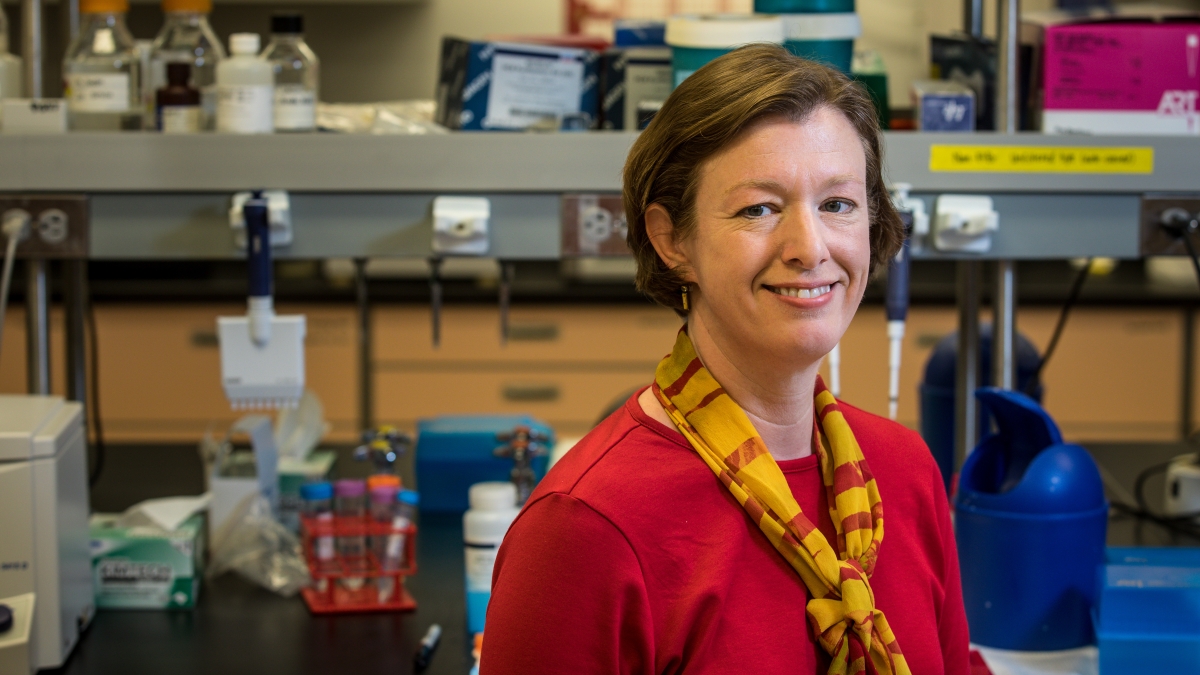Anthropology meets genetics to tell our collective story

Regents' Professor Anne Stone in her lab. Photo courtesy of ASU Now
We know that our DNA can tell us a lot about ourselves, from susceptibility to certain cancer types to biological relationships. With services like 23andMe growing in popularity, it seems we are also increasingly interested in what our genes can tell us about our past.
“People enjoy learning more about where they came from, and these kits are one way to do that,” said Anne Stone, a Regents’ Professor in the School of Human Evolution and Social Change and a research affiliate with the Institute of Human Origins at Arizona State University.
But unlike mail-in kits that only give insight into the individual, Stone, an anthropological geneticist, sees DNA’s larger potential for societal and historical revelations.
At her ASU-based Laboratory of Molecular Anthropology, she and her students examine a wide range of topics, from the population history of Peru and the Caribbean, to the microbes that live in the mouths of chimpanzees, humans and other primates.
In 2016, her work in health and populations earned her a place in the prestigious National Academy of Sciences.
Below, she answers questions about the latest research in her field and where it’s going in the future.
Answers have been edited for length and clarity.
Question: What is anthropological genetics?
Answer: Basically, we are using genetic analyses to address questions related to human or primate population history, adaptation or even community relationships. This gives us further insight into human variation and our fascinating past.
Q: How is the field not just answering questions about the past, but also helping make our lives better today and tomorrow?
A: There are several different projects currently in my laboratory that my graduate students and postdocs are working on — genetics is a team effort! — which could have implications for the future.
For example, we are analyzing ancient DNA to learn about the evolutionary history of M. tuberculosis (the pathogen causing tuberculosis) before and after the “Age of Discovery/Colonization.”
This helps us see how the pathogen changes over time and in different hosts, which can help us understand how this pathogen evolves even as it jumps from one host to another. This can provide insight into better ways to design drugs that don’t evolve resistant pathogens. It could also help assess how much of a threat pathogens in other organisms might be.
Another project is testing new forensic methods to extract and analyze DNA from degraded bones, which may lead to new methods to improve our ability to identify victims of forest fires or other disasters.
Q: What are some of the opportunities you see for future research in the field?
A: I think that the biggest changes are likely to be in terms of improving bioinformatics methods to analyze genomic data, which will help us understand more about the complex demographic history of humans and how we have adapted to different environments.
The strength of an anthropological approach is the cross-cultural and interdisciplinary perspective that we typically have. I am always inspired by my students; former undergraduate and graduate students from my lab are now working on a range of interesting projects, including growing bone stem cell “organoids” to understand how bone cells work and influence morphological traits, studying adaptation in tropical hunter-gatherers and comparing how the microbiomes among rural and urban populations differ to see how this might influence health.
More stories on the future of DNA
More Science and technology

ASU professor breeds new tomato variety, the 'Desert Dew'
In an era defined by climate volatility and resource scarcity, researchers are developing crops that can survive — and thrive —…

Science meets play: ASU researcher makes developmental science hands-on for families
On a Friday morning at the Edna Vihel Arts Center in Tempe, toddlers dip paint brushes into bright colors, decorating paper…

ASU water polo player defends the goal — and our data
Marie Rudasics is the last line of defense.Six players advance across the pool with a single objective in mind: making sure that…

